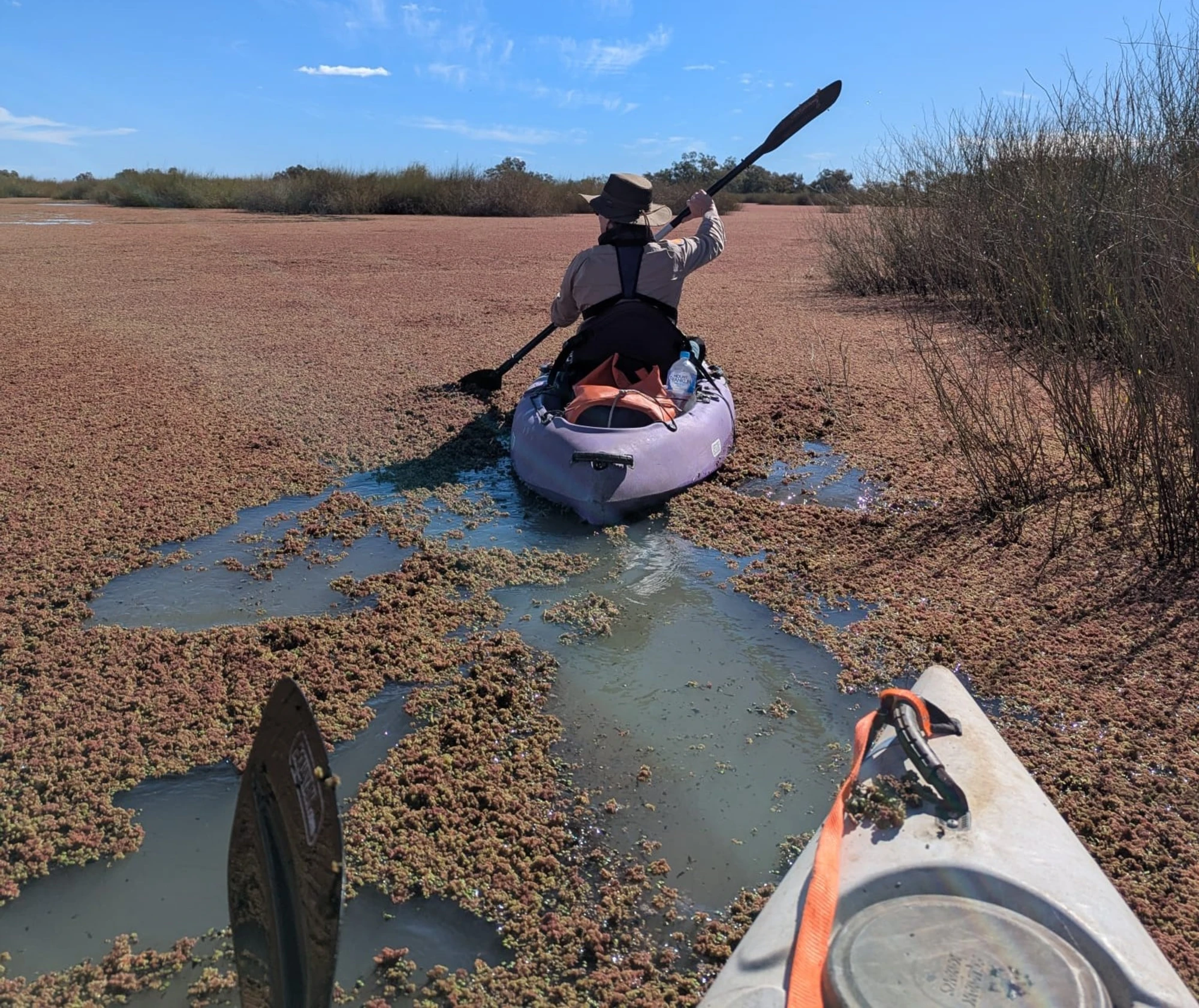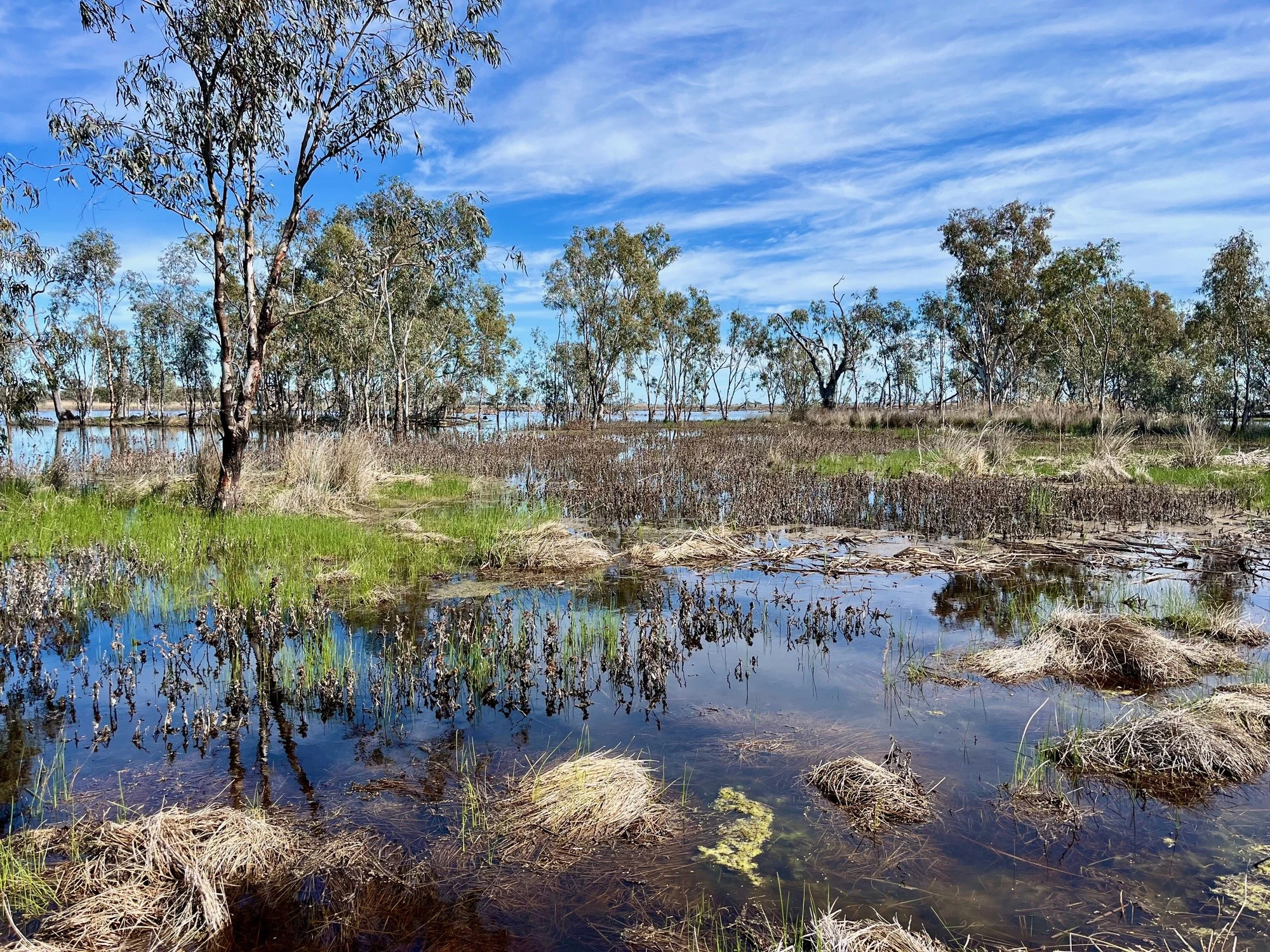University of New South Wales (UNSW) Flow-MER waterbird ground surveys were conducted in collaboration with the NSW Department of Climate Change, Energy, the Environment and Water (NSW DCCEEW) and NSW National Parks and Wildlife Service (NSW NPWS) at 10 sites in the Dharriwaa – Narran Lakes Nature Reserve in August 2025, the first for the 2025-2026 water year.
The wetlands were inundated from river flows that reached the Lakes over the past two months. Sites were between 80-100 per cent full, creating good waterbird feeding habitat.
The team recorded 32 waterbird species, including one NSW threatened species, the black-necked stork (Ephippiorhynchus asiaticus).
There was a high diversity and abundance of ducks, with seven species observed, along with a group of up to 500 Eurasian coots (Fulica atra).
Fish-eating birds were numerous and widespread, with nine species recorded, including pelicans, cormorants and terns.
Long Arm and South Arm were particularly active with several hundred ducks and coots foraging in the sheltered areas among the lignum.
No group-nesting waterbird breeding was seen; however, flocks of approximately 200 straw-necked ibis (Threskiornis spinicollis) were seen flying over Clear Lake, and an active black swan (Cygnus atratus) nest was observed.
Data was also collected from seven solar bar acoustic recorders during the survey week, including two sites on private land to the south of the reserve.
The team are currently collating and analysing both the ground survey and acoustic data to provide insight into the outcomes of environmental water and inform future water management decision-making.




.webp)
